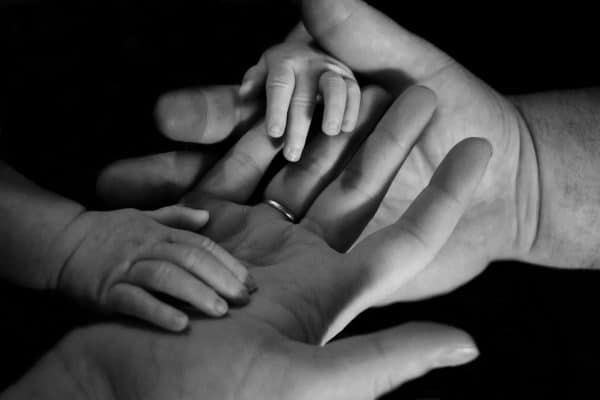 Less Worrying, More Parenting: How the CTC Helps American Families
Less Worrying, More Parenting: How the CTC Helps American Families
July 29, 2021
By Katherine Ungar, JD, Policy Associate
As a new parent to a “pandemic baby”, I’m slowly learning the art of juggling– balancing the needs of my child with the demands of everyday life. On July 15th, I received my first Child Tax Credit (CTC) payment in the mail. Initially, I was relieved to know that I would have additional financial flexibility to support my 7-month-old son. Yet, perhaps more impactful, by reducing the financial burden of raising my child, the CTC has created additional time and space for me to be a parent – to be there for my son mentally, emotionally, and spiritually. I represent just one of the 39 million households who will receive this important investment in America’s families. The CTC has significant down-stream effects, granting parents the space to spend less time and energy worrying about how to financially support their children and giving parents psychological freedom to engage with their children at the most basic human levels – playing together, learning together, and connecting with each other.
In fact, similar programs have been in existence for nearly 70 years in most parts of the industrialized world because societies recognize the importance of raising children and making sure their basic needs are met. The United States is an outlier when it comes to providing families with additional support given the high cost of raising children today.
The CTC, expanded for one year by the American Rescue Plan (ARP), is a significant down-payment on ending child poverty. The ARP changed the CTC by temporarily (1) increasing the amount of the tax credit; (2) making the amount fully refundable; (3) removing the minimum income requirement; (4) raising the qualifying age of the child from up to 16 to 17 and under; (5) providing advance payments; and (6) lowering the phase out rate. These positive changes, particularly increasing the credit amount and removing the income requirement, have the effect of reaching millions more families. Columbia University’s Center on Poverty and Social Policy estimated that the tax credit, along with other poverty-fighting policies included in the American Rescue Plan, “could lift 5 million children out of poverty, cutting child poverty in half in the U.S.” Importantly, the CTC is a tool that, if implemented well, can advance racial equity: it has the potential to cut poverty by 52 percent for Black children, by 45 percent for Hispanic children, by 37 percent for Asian American and Pacific Islander (AAPI) children, and by 62 percent for Indigenous children.
The CTC will reach 92 percent of Ohio families. Couples making up to $150,000, single Head of Households making up to $112,500, and everyone else making up to $75,000 will receive the monthly payment of the CTC from July 15 to December 2021. Qualifying families will receive $3,600 total for each child under 6 and $3,000 total for each child 6-17 years of age. The monthly payment is reduced by $50 for every additional $1,000 of income earned.
The ARP also changed how the benefit becomes available to families this year. Instead of waiting until filing taxes in 2022, families are able to receive the cash benefit as an “advance” through monthly payments that started in July and will continue through December 2021. By increasing the benefit for children and providing it monthly throughout the year, families will have support to better meet their everyday expenses, including food, housing, transportation, and child care.
If an eligible family filed taxes in 2020 or 2019 or used the non-filer online portal to receive stimulus payments, they should automatically receive their payments beginning on July 15 without taking any further action. However, families who did not file taxes in the last two years or register for the stimulus payments will have to use the CTC Non-Filer online portal to claim their CTC payments.
The one-year expansion of the child tax credit is already providing support to families. For the CTC to meet its intended goal of reducing poverty, it must be implemented effectively to reach all who are eligible and made permanent.
Our Work is Not Done: the CTC Must Reach All Eligible Households and be Made Permanent to Reach it’s Intended Outcome
Without meaningful outreach, millions of children who are eligible for the credit –primarily those living in families with the lowest incomes who did not file taxes in the last two years– could miss out. According to this article in the Atlantic, “[a]n estimated 88 percent of recipients will not need to do anything to get the cash—the IRS will send the money automatically. But an estimated 4 million to 8 million eligible children are at risk of missing out, because their parents or guardians do not need to file taxes or are not filing taxes—and because they might not even know the complicated, obscure-sounding, and scarcely advertised policy exists.”
Outreach alone is not enough to overcome the challenges some households face in accessing the CTC
States and communities must make concerted efforts to assist families in accessing the benefits that they qualify for through for example, community navigator programs, utilizing support networks like food banks and religious entities, and other points of contact for families. Community Navigator programs help build awareness and bring comfort and validation to the process, especially if the navigators are trusted community members.
While the temporary expansion of the CTC is a helpful first step to ending child poverty, it is only that—a first step. CTC permanency is crucial to the Children’s Defense Fund’s vision of a nation where marginalized children flourish. President Biden has outlined a plan to continue the Child Tax Credit to 2025 in his American Families Plan, and the Children’s Defense Fund-Ohio is proud to support and advocate for this policy to be made permanent.
For more Resources on the CTC, see:
- What’s New about the Child Tax Credit in 2021? (FAQs)
- FAQs in Spanish
- Guide to Filling out the IRS Non-filer Form
- Guide to Using the IRS Child Tax Credit Update Portal (CTC UP)
- Getting Started with Outreach
- CTC Navigator Training
- CTC Outreach Resources Hub: www.taxoutreach.org/coronavirus


 Less Worrying, More Parenting: How the CTC Helps American Families
Less Worrying, More Parenting: How the CTC Helps American Families